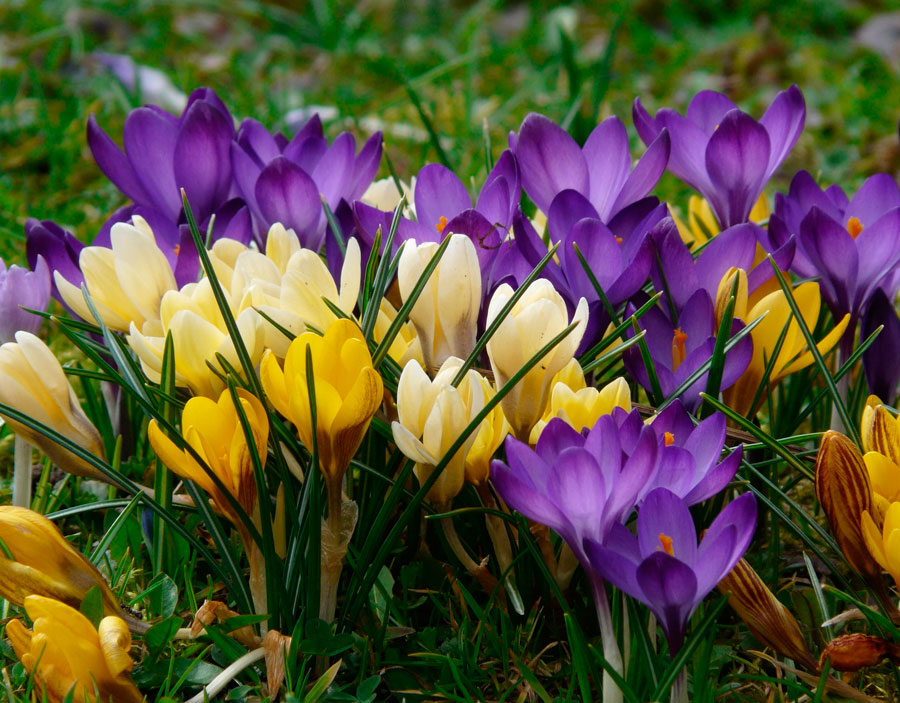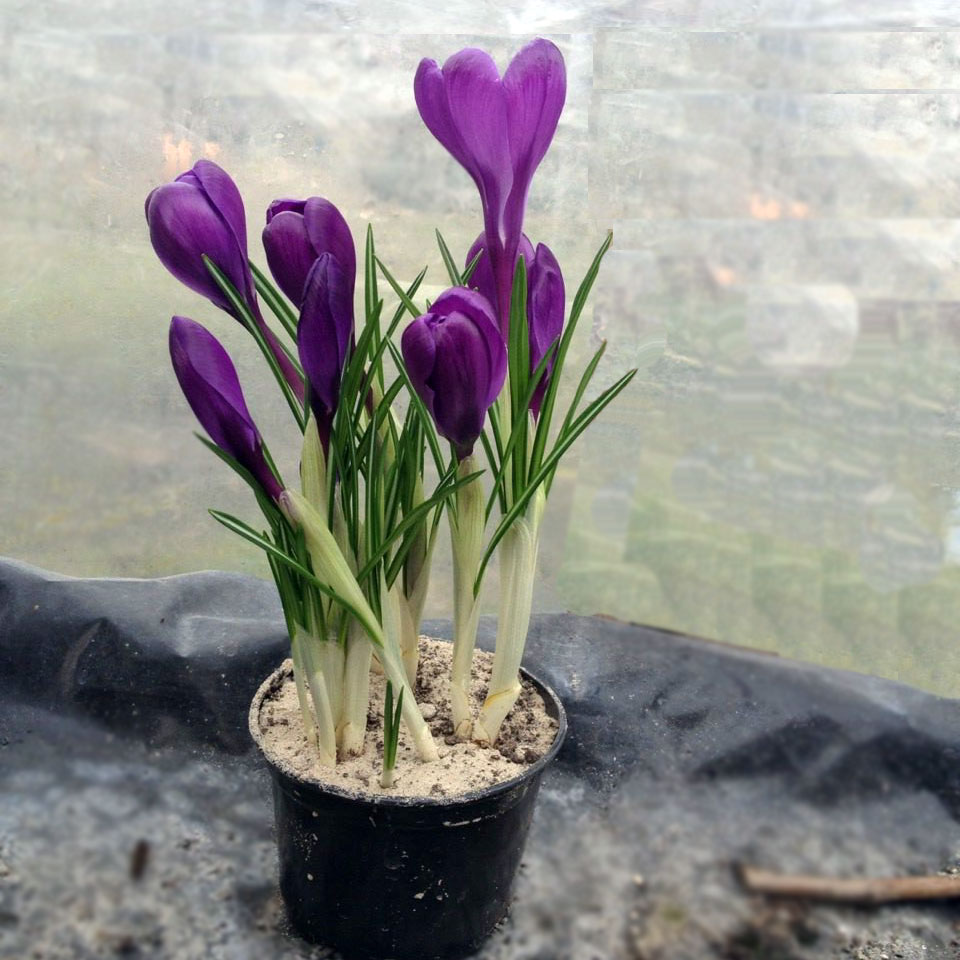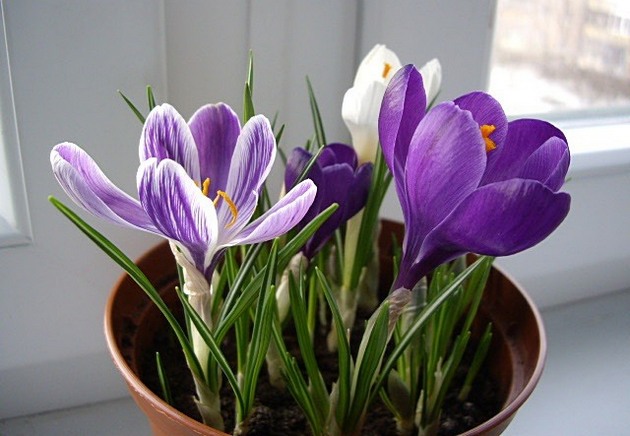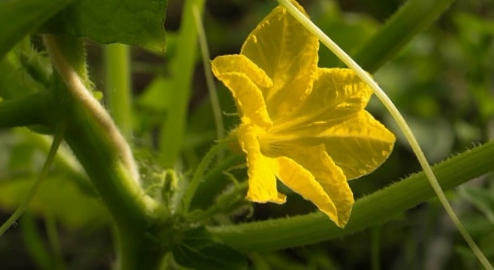Content:
Crocus is one of the most common flowers that appear in early spring. It is found on the site of almost every summer resident. When crocuses have faded, not everyone knows what to do with them, and this is an important stage of agricultural technology.
When and how much crocus blooms
Crocus (Latin Crocus), also known as flowering saffron, is a genus of herbaceous corms belonging to the Iris family. In the wild, the flower grows in forests, steppes and meadows. Distributed in the Mediterranean, Minor and Central Asia, the Middle East, as well as in Europe.
Saffron is a dwarf plant, without a stem, flowering in the first half of April. At this time, the snow begins to melt. Crocuses, when they bloom, are very beautiful, for this they love to plant them in the garden, but the duration of flowering is only a week.
Crocuses after flowering - what to do
What to do with crocuses after their early flowering - unsightly peduncles are cut off, but the remaining leaves are very decorative. They won't fade long enough. After the plant has faded, the entire aerial part of the saffron turns yellow and dries up, the bulbs are taken out of the ground and dried. They must be planted in early autumn so that the plants can bloom again in the spring.
Once the bulbs are dug up, they need to ensure proper storage. It is necessary to clean the planting material from soil, dead parts and put it in one layer for storage. The ideal conditions for the bulbs are a temperature of + 22 ° C, so that the buds are laid successfully, then + 20 ° C in August and + 15 ° C a week later. But at home they are stored in a dark, dry, well-ventilated room.
However, these flowers do not need to be transplanted annually. If the saffron has lived in one place for less than 3 years and the earth is still visible between the plants, then the care consists in mulching with a layer of peat or dry leaves.
Why transplant crocuses
Although saffron is not dug out every year, after 3 or 4 years the need for this procedure arises. When to transplant crocuses to a new place - the best time for this is in July, when the flower has a dormant period. For such a long period, the mother bulb manages to overgrow with many daughter bulbs, they interfere with each other, and the flowers become smaller. To help the flower recover, transplant is carried out.
When can you transplant crocuses to a new place
If there is a need for planting material, then the plants are dug up earlier than 3 years later. They are divided and transplanted. Saffron bulbs, which bloom in spring, are dug up from mid-summer to September, and those blooming in autumn from June to August. If there are damaged areas on them, then they are treated with crushed coal or ash and sent for storage.
Crocus transplant
Saffron plants are small, so they are planted in the ground rather densely, according to the following scheme:
- between the flowers you need to make a distance of 5 cm;
- the depth of the ground is from 4 to 11 cm and depends on the size of the planting material.
For these plants, both single planting and group planting are practiced in the composition.
Tips and tricks from experienced florists and gardeners
Experienced summer residents distill saffron at home. For a flower, the entire cycle is repeated, which it takes place in its natural environment, thus helping the plant to bloom at the right time. In June, the bulbs must be dried, and then calcined at a temperature of + 34 ° C for about 7 days. Then the temperature drops to + 22-23 ° С and decreases every 14 days until it reaches + 17 ° С. This falls in mid-August. Then the crocus bulbs are hardened - they are kept for a month at a temperature of + 6 ° C.
The last stage is the rooting of flowers - the saffron is planted in a pot. When planted in September, the crocus will start blooming in January. If it is necessary to delay the process, then the rooting period is extended.
As with all bulbous plants, crocuses should not be disposed of after they have faded. You can literally give them a "second life" and get a new harvest from the old next year.















